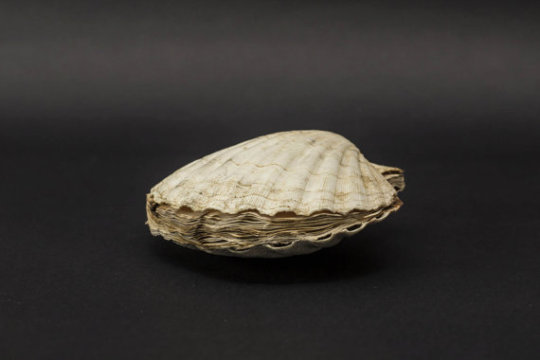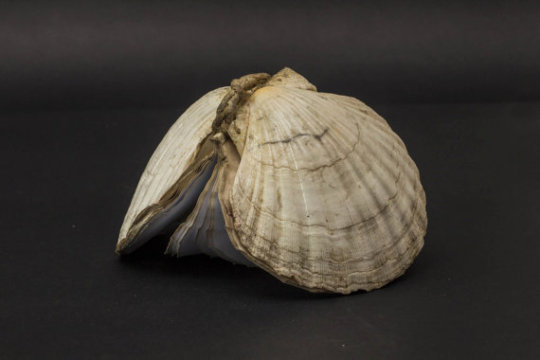Heathen. Recon-derived rather than recon-based.Loki and Njord are my main dudes at present. Sometimes I get depressed and disappear for a year or so, but I come back eventually. LGBTQIA+ & Anti racism disguised as religion.
Don't wanna be here? Send us removal request.
Photo

Dune Waves - Jeanne Rosier Smith
American , b. 1966 -
Pastel , 30 x 30 in.
1K notes
·
View notes
Text
I mean, njord is a great masculine maternal figure anyway.
3 notes
·
View notes
Text
sometimes I wonder if the reason I haven’t really connected with any goddesses is because of my ‘mother stuff’.
I’ve been actively dealing with it a lot more now, so it’ll be interesting to see if I’m open to different and new things.
2 notes
·
View notes
Text
Opening yourself up to worship is chumming the water while you float helplessly among the viscera, waiting to be devoured by anything that shows up
93 notes
·
View notes
Video
youtube
Sooooo this happened yesterday!!!!! Shameful that we had to go through the postal survey polava to get here, and that it took us so long generally, but here we are. Never thought the daggiest of all Australian songs would bring a tear to my eye, but here we are.
0 notes
Photo

oct 9
I saw a chambered nautilus moving through water a while back and it was mesmerizing
1K notes
·
View notes
Photo

A bird’s nest in a broken skull at St. Leonard’s Crypt.
42K notes
·
View notes
Text
upg Njord thoughts: Is gentle Doesn’t really seem to seek out worshippers as much as extends a gentle suggestion that you may take on or ignore, do as you wish Softly Unmoved because always moving imperceptibly In this way, steadfast Never really minds at all ho hum, ho hum, ho hum
60 notes
·
View notes
Photo

images of the oregon coast: 38 captured 22 may 2017
154 notes
·
View notes
Text
In general, I have some FEELS regarding the ebb and flow of Njord’s place among mortals and the gods. He has gone from a respected and presumably beloved figure among the Vanir, to being a hostage, to becoming one of the foremost among the gods in Scandinavia, to being one of the few who had folk practices left lingering to honor him, to now being one of the least recognized and represented deities among the norse pantheon. One song I have on the playlist I’m working on for him has the lyrics ‘They will build me no shrines and sing me no songs’, in the view of a person who has started, or is in the middle of, a long winding journey. He has gone from being a displaced god, to one with many hoffs and homes, to one whom even fellow pagans I talk to in the real world barely know of, if at all! Some of the most popular posts in his tag is not about him, but rather has him as a side mention to his daughter Freyja, or to his ex-wife Skadi. Of course, he doesn’t seem to have the hunger of power that I’ve found other gods have. There is something so… accepting about this in his nature, the recognition of the way time and the universe WORKS. You will be forgotten, you will be remembered, you will be found again, you will be lost again. The universe is vast and human memories or so very small.
118 notes
·
View notes
Text
Late to the party I know (err 4 years too late...) Worthwhile reading.
I too have a lot of upg re: this myth. Personally I’ve always found the image to be a powerful one, and it taps into a lot of feelings I have regarding loki as a sufferer/scapegoat. I’ve always found the surrounding circumstances to not make a lot of sense though, so maybe this is why.
How "Original" Is Loki's Binding?
Anonymous asked:
“The story of Loki being chained in the cave with Ska��i setting the snake above him is already so strange and academically unstable that I wouldn’t stress too much about it.” I would love to hear more about this, as I don’t have research but the whole story seems so.. well. Familiar? Yet makes no sense?
Sure! Basically the debate around this issue stems from the “fettered devil” motif in medieval Christianity.
The image of Satan being chained and subdued was widespread in Christian sources roughly contemporaneous with the composition of the Eddas. In several Old English poems from the 8th and 9th centuries (thus predating the Völuspá) we see Satan described as being in chains. One of these such poems is Christ II, attributed to Cynewulf, which states: “bound the king therein/ the advocate of demons/ the malignant one/ with fiery fetters/ and there yet he lies in prison/ secured with bonds/ confined for his sins” (Peter Dendle translation). Another example of this is the Psalter Tiberius: The Harrowing of Hell dated at about 1050 (“The Battle Between Christ and Satan in the Tiberius Psalter” K.M. Openshaw). If the dating on Völuspá is correct, this piece is probably newer than that mention of Loki’s binding, but older than the Lokasenna and Prose Edda. The 12th century Vision of Tundale hinges on Tundale’s discovery that Satan is suffering in chains in hell waiting for the Apocalypse.
You may have noticed that all of the above mentioned sources are British. This is important in that Great Britain was the primary site of contact with Christianity for Viking Age heathens. There are even some who suggest that there were English Christian missionaries in Norway around the time of the Völuspá’s composition (I talk about this more here). It is also worth noting that our one visual representation of Loki and Sigyn is found on the Gosforth Cross (ca. 950) in Cumbria, Britain.
Of course, one could easily make the chicken-and-the-egg argument and say that the bound Loki was assimilated into Christian imagery in Britain. But there are two problems with this statement: First, the Cynewulf poems predate the Völuspá, and second, this motif also existed in southern Europe (seen here in this late medieval illumination from Las Huelgas Apocalypse), speaking to the fact that it probably came north with the spread of Christianity.
But even so, I feel I should acknowledge the counter-arguments. It is of course possible that the Völuspá existed earlier in an oral form, but because portions were taken directly from Old English sermons this seems unlikely. It is also worth acknowledging that we only see the “fettered devil” appearing in Britain during the Viking Age, and it gained ground in southern Europe even later (Satan Unbound: The Devil in Old English Narrative Literature Peter Dendle). We also do not know for sure if Anglo-Saxon Britain had access to the Book of Revelations during this period (which is where the verse about Satan in chains actually appears, Revelations 20) as early Old English Apocalyptic literature draws solely from the Book of Mark. That being said, I still feel that the direct quotation of Old English Christian literature in the Völuspá strongly suggests Christian interpolations in that text and later Eddic poems, bringing moments such as Loki’s monster children, His binding, and His role in Ragnarök into question.
But the most convincing argument for this Christian interpolation comes in the story of Thorkill in Saxo Grammaticus’ Gesta Danorum Book 8 Part II. Thorkill comes to a cave full of giants playing games, feasting, and casting illusionary spells. Many elements of this story are reminiscent of Þórr’s journey in Útgarðar found in the Prose Edda. Thorkill angers the giants and has to flee, but when he returns to his king the king fears he has angered Útgarða-Loki/Utgarthilocus and must return to appease him. When Thorkill arrives again the cave has changed. It is putrid and full of snakes, and they find Utgarthilocus in chains. As they flee, the snakes drip poison on them: poison that is so powerful that it melts off one person’s head. Thorkill is so horrified by what he sees that he immediately travels to Germany and converts to Christianity. This story is clearly a didactic one, meant to prove that the old Gods (and, yes, the text actively identifies Utgarthilocus as a God) are but demons who bring filth instead of beauty. In meeting the chained God, Thorkill comes to see him as the devil himself, and regrets that anyone ever put faith in such a being. While Grammaticus calls him “Utgarthilocus,” it cannot be ignored that certain elements of this story link to Loki, not Útgarða-Loki, suggesting a slippage that I hope to study more in the future.
In short, there are various medieval Christian sources that either use the devil as a chained figure in exactly the same way we see Loki used in the Eddas or profit off of the imagery of Loki as a heathen God being “so weak” that he can be restrained. For this reason, I think it is worthwhile to consider that Loki’s binding might not be original to the mythos. In “Sewn Lips, Propped Jaws, and a Silent Áss (or two): Doing Things with Mouths in Norse Myth,” Wanner suggests that the sewing of Loki’s lips is a more suitable “injury” to Loki’s qualities, like to Óðinn’s loss of an eye in spite his ability to see everything or Týr the warrior’s loss of a hand. He goes on to cite Anna Birgitta Rooth’s suggestion that this binding might be “more authentic” than the fettering we see in the Lokasenna (5-9). The argument Wanner makes concerning Loki’s sewn lips and how they, not the actual “binding,” befit his offenses in the Lokasenna seems to be an important one, even if it is not absolute proof that Rooth’s theory is correct. I think it is at least worth considering that Loki’s binding may have been merely his mouth and that other notions of Loki chained and fettered with a snake overhead might be Christian interpolations.
I am often accused of being an “apologist” when it comes to Loki, and I want to be clear that this is not at all my intention. I worshiped Loki back when I believe that everything, the murder of Baldr, his monster children, the binding, and Ragnarök were original to the mythic tradition. I have only later come upon academic claims that forced me to reconsider some of these earlier beliefs. I have experienced “UPG” of Loki bound in the cave and I still find the image of Loki and Sigyn to be extremely potent and spiritually meaningful to me. In my opinion, myths are not literal truths, but rather exist to give us a particular feeling or impression about the Gods and their deeds. I can see the value of feelings that may come from Loki’s binding. However, because so much academic work undermines this particular portion of the Poetic Edda, I am not going to refrain from worshiping Loki and Skaði together or hold something against Skaði that may or may not have any heathen basis.
219 notes
·
View notes
Photo

Koonya Beach, Blairgowrie, Australia | by Brittany Gaiser
9K notes
·
View notes
Photo

Stevie at the ‘Day on the Green Festival’ in 1976.
1K notes
·
View notes






